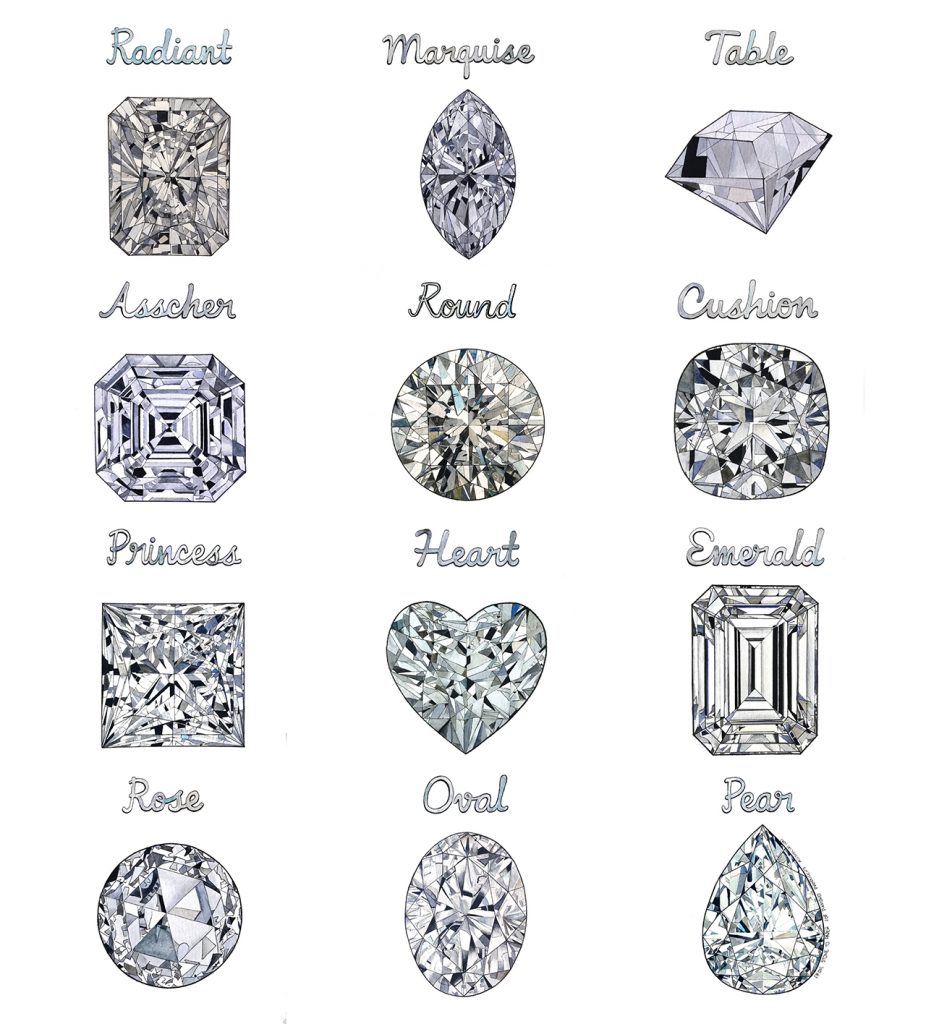Ring Shopping Guide For Dummies
When Adam and I started getting serious (a few years in), friends and family began asking me what kind of ring I wanted. “I don’t know, a big one?!” Duh. But in terms of style, I honestly didn’t know what my options were! There’s so much terminology around size, cut, color, shape, setting, etc and nothing that really makes it easy to digest. So, here is your ring guide for dummies!
*Before scrolling, please note that I HIGHLY recommend you go in person to look at rings! Whether you bring your partner, a friend, or your uber driver who picked you up, it helps to see them on your hand. You may think you love your mom’s round cut diamond but the way it looks on her long, skinny fingers may be very different than how it would look on your short, stubbier hand (no shame in the large knuckle game). Similar to dress shopping, this is your chance to try on one of each and take your time making a decision. It’s something you’ll have on your hand forever, so you better really love it! Also, make sure to ask the store associate to measure your ring finger so, when the time comes and he is down on one knee, he’s not left forcing it past your knuckle. Nobody wants a sausage-looking close up pic on their insta story!
Shapes
The most popular shapes include: Radiant, Round, Cushion, Princess, Emerald, Pear, and Oval.
Radiant: A Rectangular, cropped corners shape that is similar to an emerald cut but with the stunning sparkle/shine of a round cut
Round: Just as is suggests, it’s a circular shape. It is one of the most popular choices for engagement rings, possibly because of its sparkle factor
Cushion: This is a square cut with rounded corners, making it look similar to a pillow (hence the name). Their proportions can vary, making some look long and narrow and others more like a square
Princess: A square or rectangular shape (depending on the diamond; the more rectangular, usually the less expensive). When looking down at it, it bares an X shape
Emerald: An elongated, rectangular shape with chiseled cuts, usually running parallel down the stone. The corners are typically cropped as well to add stability to it
Pear: Resembling a tear drop, it is pointed at one end and rounded on the other. It presents a beautiful sparkle
Oval: Beautifully elongated, its design makes it appear larger than other shapes of the same size. It is also less prone to chipping since there are no sharp corners to it. Best for those with long, slim fingers
The Four Cs
Cut, Color, Clarity and Carat
These play a large role in the diamond’s quality and value. Typically, a higher cut above everything else will impact its sparkle, but balancing the color and clarity will help you get the biggest bang for your buck.
Cut: This refers to the diamond’s angles, proportions, symmetrical facets, and details. They directly impact its ability to sparkle and its overall beauty
Color: This is graded from D to Z in terms of how white or colorless the diamond is. D is the most colorless (and valued the highest), and Z contains the most noticeable brown or yellow tints (valued at less).
Clarity: This is graded from FL to I2, based on how clean the diamond is from inclusions and blemishes. FL is flawless, and I2 has the most inclusions/blemishes. A Diamond’s Clarity grade evaluates how clean a diamond is from both inclusions and blemishes
Carat: This actually refers to how much the diamond weighs, and not how large the stone is
Size
Here is a chart to help you visualize size differences, but keep in mind that each diamond looks diff on everyone’s hands! Go into the store to try them on and see what size looks best for you. Also, keep in mind that other factors go into how sparkly and valuable a diamond is..it’s not just size that matters!
Settings
There are many types of settings, but the two more common ones are solitaire and halo.
Solitaire/Prong setting: The most common and classic choice, which includes a metal claw that grips the diamond in place. It is a clean, classic look that elevates the diamond with nothing else around to distract your attention from the main event.
Halo setting: This refers to the placement of diamonds in a circle or square around the center stone, making it appear larger. It also increases the sparkle of the ring.
Metals
The most common choices are platinum, gold, rose gold, silver, and white gold. They get a little confusing to explain, so I’ll just go ahead and summarize the most popular choice (Platinum), and use a photo to showcase the rest!
Platinum: With white coloring, it is a little more expensive than white gold but is more durable. It will never dull or tarnish, and it’s also the rarest of the precious metals—30 times rarer than gold—and consequently, the most expensive.



